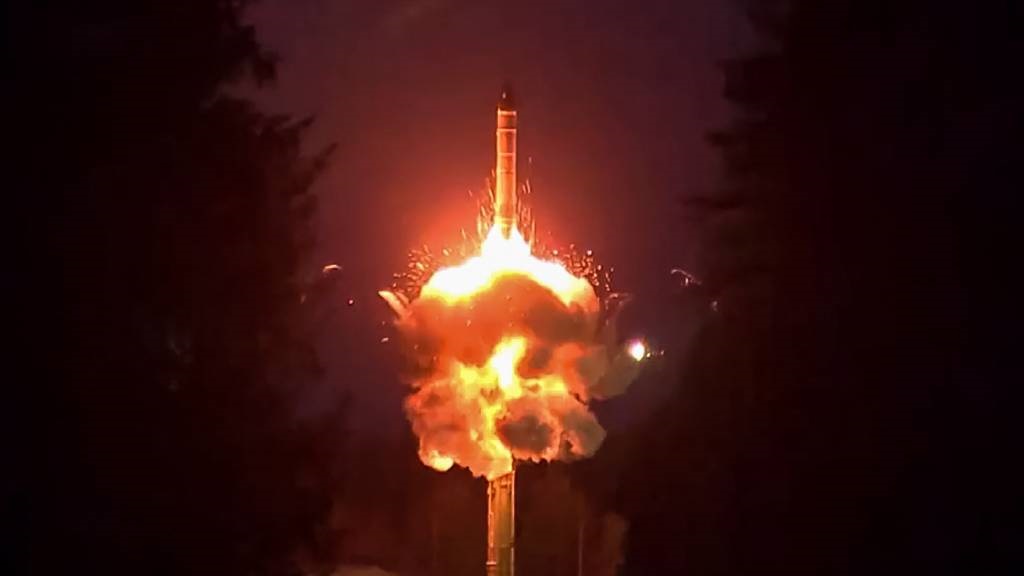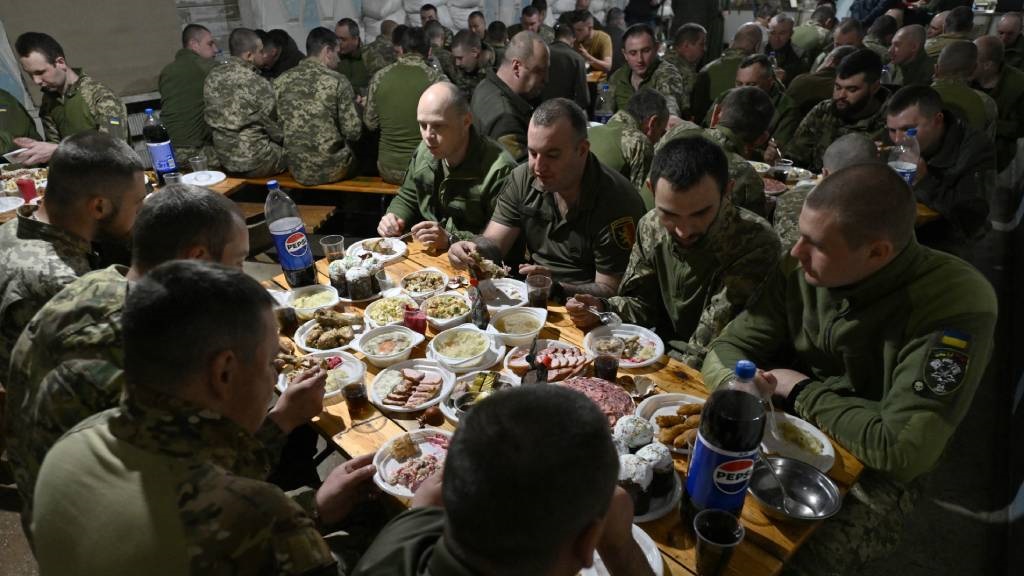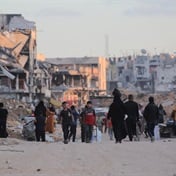
- Russia announced nuclear drills.
- European leaders voiced support for Ukraine.
- Missile formations in the Southern Military District and naval forces will take part in the drills.
Russia has said it will hold drills that will include practice for the use of tactical nuclear weapons, days after top European leaders voiced stronger military support for Ukraine.
The Kremlin said on Monday the military exercises ordered by Russian President Vladimir Putin were in response to statements by Western and NATO-member countries about sending troops into Ukraine, which Russia invaded more than two years ago.
They will include practice for the preparation and deployment of nonstrategic nuclear weapons intended to "increase the readiness… to fulfil combat tasks" after "provocative statements and threats of certain Western officials", the Ministry of Defence said.
Missile formations in the Southern Military District and naval forces will take part in the drills, which would take place "in the near future", it added.
Russia's strategic nuclear forces regularly hold exercises, but the statement marked the first public announcement of drills involving tactical nuclear weapons, which are usually smaller in yield - the amount of power released during an explosion - than the strategic nuclear weapons designed to destroy entire cities.
READ | Ukraine launches drone attacks on several Russian regions, officials say
The move marks an escalation of tensions that have risen since French President Emmanuel Macron said last week that his country would consider sending ground troops to Ukraine if Kyiv requests backup.
A day later, UK Foreign Secretary David Cameron said Ukraine could use British weapons against targets inside Russia if it wanted.
Russian officials condemned both statements and warned Moscow would retaliate to what they called a "dangerous escalation trend".
Moscow has long warned that conflict with NATO would become inevitable if European members of the military alliance sent in their soldiers to fight in Ukraine.
Relations between Western countries, led by the United States, and Russia broke down after Russian forces invaded neighbouring Ukraine in February 2022.
Since the war began, Russia has repeatedly warned of rising nuclear risks - warnings which the US says it has to take seriously though its officials note they have seen no change in Russia's nuclear posture.
Russia and the US are by far the world's biggest nuclear powers, holding more than 10 600 of the world's 12 100 nuclear warheads.
China has the third largest nuclear arsenal, followed by France and the United Kingdom.
While there is no universal definition, tactical nuclear weapons are often defined by their size and range, or their use for limited targets.
There is no agreed-upon size that characterises tactical weapons, but they are usually much larger than conventional bombs, causing radioactive fallout and other deadly effects beyond the explosion itself.
They are often referred to as "nonstrategic weapons", in contrast with strategic weapons, which the US military defines as designed to target "the enemy's war-making capacity and will to make war", including manufacturing, infrastructure, transportation and communication systems, and other targets.
Tactical weapons, by contrast, are designed to accomplish more limited and immediate military goals that win a battle. They can be mounted on missiles, airdropped bombs, or even artillery shells that have a relatively short range, far less than the huge intercontinental ballistic missiles designed to travel thousands of kilometres and hit targets across oceans.
"Tactical nuclear warheads were created to give military commanders more flexibility on the battlefield. In the mid-1950s, as more powerful thermonuclear bombs were being built and tested, military planners thought smaller weapons with a shorter range would be more useful in 'tactical' situations," according to Al Jazeera's defence editor Alex Gatopoulos.
"Modern warheads have a variable 'dial-up' yield, meaning an operator can specify its explosive power, and a tactical weapon would be anywhere from a fraction of a kilotonne to 50kt in strength. For scale, the weapon that destroyed Hiroshima was roughly 15kt. A single kilotonne is equivalent in power to 1 000 tonnes of TNT," he said.




 Publications
Publications
 Partners
Partners




























